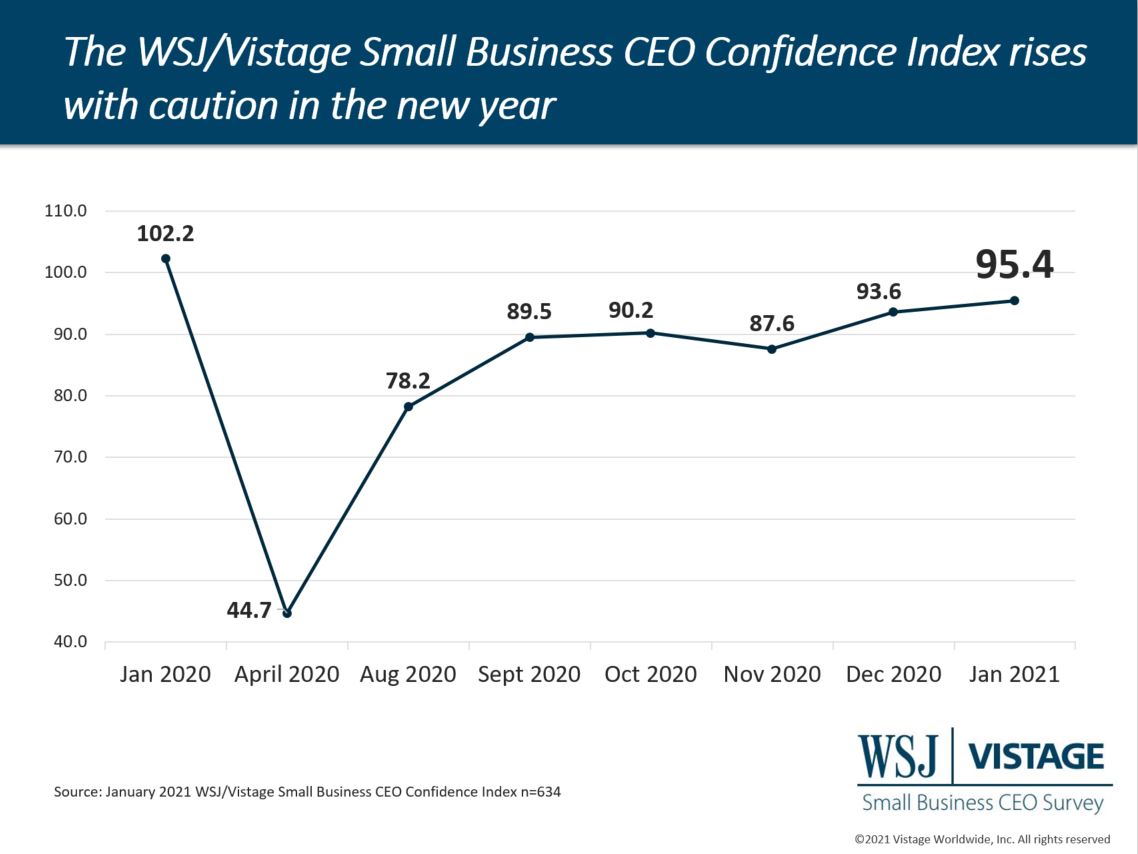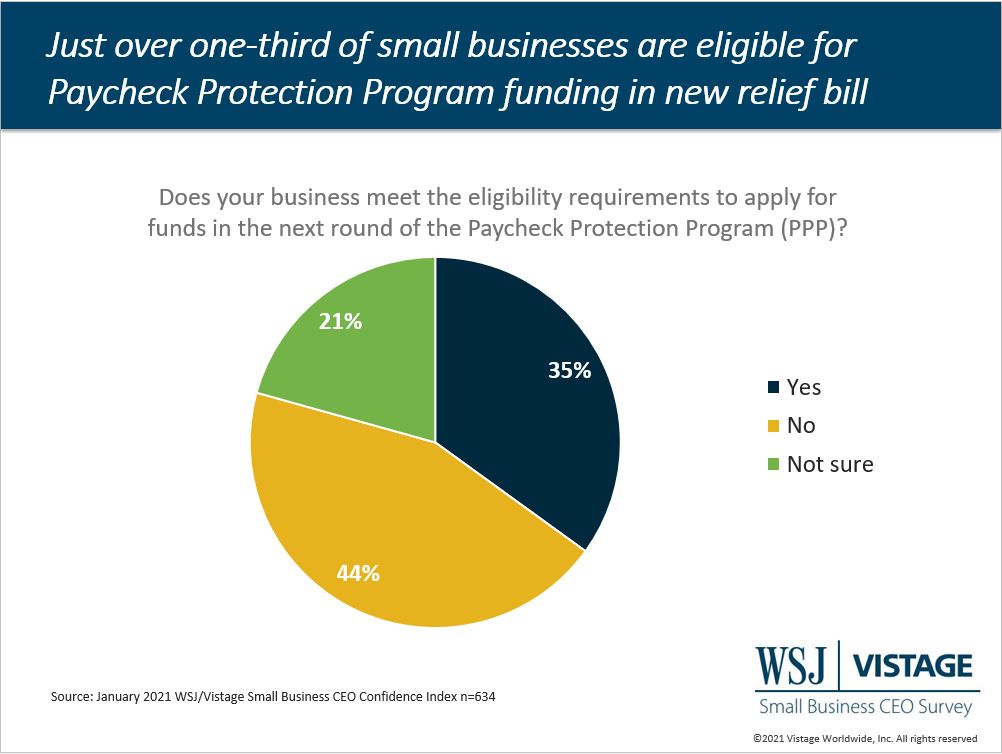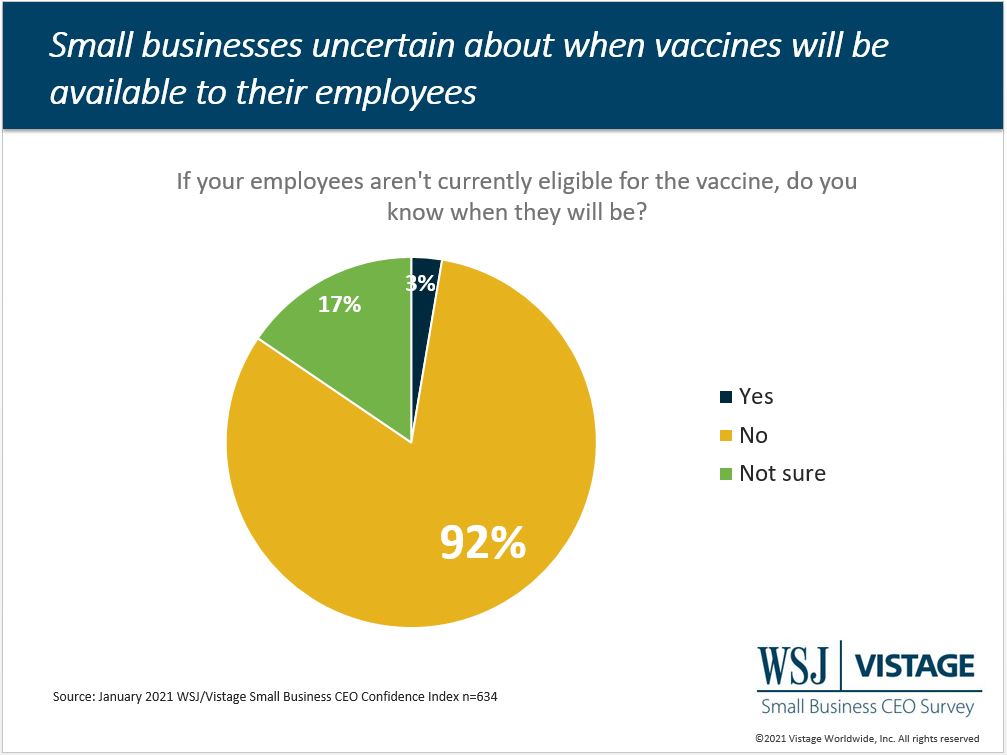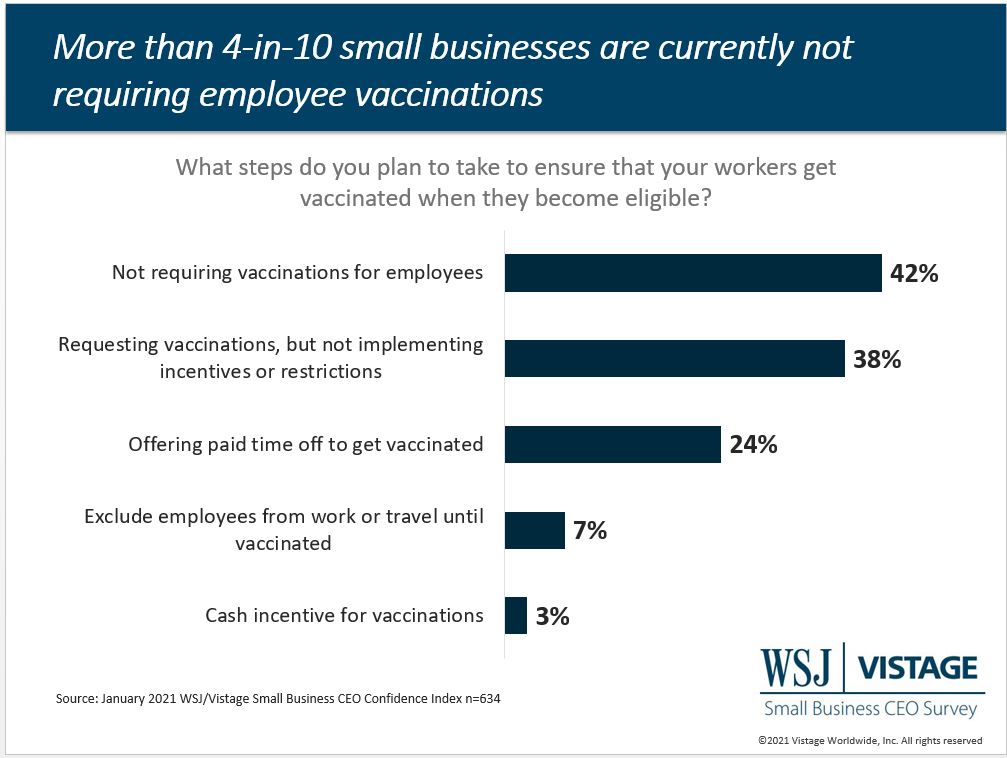Small businesses project rise in revenues, await clarity on vaccine rollout [WSJ/Vistage Jan 2021]

January Highlights:
- Small businesses are uncertain about vaccination eligibility and their approach to employee vaccinations.
- The proportion of small businesses that plan to expand their workforces is 62%, a 5-point decline from December.
- Pessimism continues to decline — while 67% of small business CEOs reported that the economy was worse than a year ago, this is an 8-point improvement from 75% in December.
- Just 35% of small businesses report eligibility for new Paycheck Protection Program funds.
- Small businesses reported the best overall outlook for revenues and profits since February 2020 — 69% expect increased revenues in the year ahead.
Election runoffs for senate seats in Georgia, violence at the capitol and a record breaking week of COVID-19 cases were major events that raised caution for small business leaders the week the January WSJ/Vistage Small Business CEO survey was in the field.
Despite these headlines, the WSJ/Vistage Small Business CEO Confidence Index rose incrementally in January to 95.4 from 93.6 recorded in December. Factors driving that marginal increase include a decline of pessimism about the U.S. economy as well as strong expectations for revenue growth in the year ahead, which offset more conservative projections in expansion plans.
Download the January 2021 WSJ/Vistage report for the complete analysis

Get the full January 2021 WSJ/Vistage report infographic
Revenues predicted to rise after pandemic impacts
While 6-in-10 small businesses reported some level of revenue declines from the pandemic, the future looks brighter with 69% projecting increased revenues in the year ahead. The proportion of small businesses that experienced annual YOY revenue declines of greater than 25% in 2020 was just 19%.
The silver lining is that based on the criteria in the new relief bill, currently 35% of small businesses report being eligible for the Paycheck Protection Program funding, while 21% are still uncertain as they seek to understand the new guidelines of eligibility.

Leaders contemplate approach to employee vaccinations
While the major headlines in January included the roll out of vaccines in the U.S., there is still a great deal of uncertainty among small businesses about how soon the vaccines will be available to their employees. Just 17% of small businesses reported that some (9%) or all (8%) of their employees were eligible to receive the vaccine. Of the 83% that were unsure about their employees’ eligibility, the overwhelming majority (92%) of small businesses don’t know when their employees will be eligible. This requires small businesses to continue — or even ramp up — their efforts to keep employees safe. There is light at the end of the tunnel, but it is a long tunnel that will require time and vigilance in the practices small businesses have adopted to maintain productivity, from remote working to shift scheduling and other social distancing efforts in the workplace.

The role of employers in vaccine distribution
While few small businesses are currently requiring their employees to be vaccinated, leaders should consider their role in ensuring the successful rollout of the vaccine that can help return life — and business activity — to pre-pandemic levels. While 42% of small businesses are not requiring vaccinations, there are other efforts businesses can make to help accelerate the distribution, including educating employees about availability and locations as well as offering paid time off to go get vaccinated. Nearly a quarter (24%) of small businesses are already offering paid time off for employees to get vaccinated, and this is projected to climb. The impacts of employee vaccinations extend beyond business, and ensure communities are on the path to reaching the immunity needed to lift restrictions and make progress towards the new post-pandemic reality.

This bottom-up approach will compliment the efforts of the new presidential administration. Dr. Curtin notes that “The critical task for the incoming Biden administration is to not only accomplish his promised vaccination of 100 million in his first 100 days, but to accelerate on that improved pace of vaccinations for the balance of the population.”
Download the January 2021 WSJ/Vistage report for the complete analysis
Related links
|
Survey Methods The January WSJ/Vistage Small Business CEO survey was conducted January 4 – 11, 2021 and gathered 634 responses from CEOs and leaders of small businesses with revenues between $1 million and $20 million. Our February survey, in the field February 1 – 8, 2021, will capture sentiment of small businesses at the start of the new administration. |
Category: Economic / Future Trends
Tags: Challenging Times Business Strategies, coronavirus, Small business, US Economy, WSJ Vistage Small Business CEO Survey

